It’s May 3, spring is at its best – and our teams are on their way to Sivers’k. The sun is shining, there is hardly a cloud in the sky.
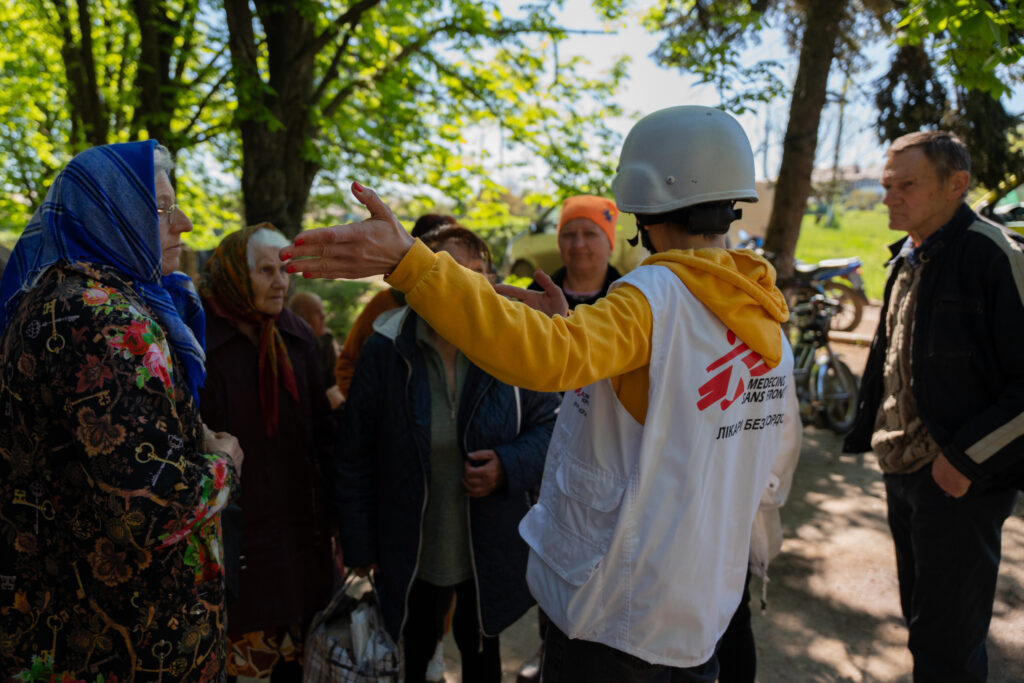
It’s May 3, spring is at its best – and our teams are on their way to Sivers’k. The sun is shining, there is hardly a cloud in the sky. “It’s strange,” says our team lead Sveta, pausing for a few seconds as she drives our four-by-four over the road covered with potholes. “When it rains or snows, we get annoyed with the bad weather, but when the sun shines, it’s not good either.” Drones – that is, is what she means: Our teams can easily be spotted by Russian intelligence apparatus when the weather is good. So a cloudless sky means increased risk – even if the situation on the front is currently stagnant.
Our plan for the day: another mobile clinic in Sivers’k, a town in the Donetsk region, about 20 kilometers north of Soledar. The current line of contact is about 10 kilometers away.
Basic medical care where normal life no longer exists
Already in the forefront we distributed flyers in the city, stuck posters, went to the local administration to clarify everything: Doctors visit the city, which has been cut off from the outside world for months – we make sure that the civilians hear about it and if they cannot come to the clinic themselves, we pick them up. In this way, even people who can’t move will have access to basic medical care.
When the partner-crew arrives, a group of people are already sitting in front of the once fully functional hospital. Today, it also serves as a shelter for people whose homes have been destroyed. In the basement of the building, the single rooms have been prepared for the city residents.
Those waiting talk, smoke, some of them live here. Again and again artillery can be heard, sent by the Ukrainian military in the direction of the contact line. However, there are also distant impacts of Russian artillery. An old woman with a red headscarf and a hunchback collects wood from destroyed houses and brings the full bags down to the basement. Another woman sweeps the floor in front of the entrance.

Russian artillery is still relatively far away.
While the doctors begin to treat people, we make our way to the approach points we know. We have been in contact with the local administration before, so we know the addresses of those who need treatment. Most of the people who still live in Sivers’k are already very old, can hardly or not walk at all and therefore need our driving service.
While we are working, we hear that the impacts of Russian artillery are becoming more frequent – and louder. Drones can also be heard. Are they Russian or Ukrainian? It is very rare to say, but we should not risk anything. We wait for a while in the basement of the hospital to be on the safe side, while neither the drones, nor the impacts seem to worry the local people. They continue to sit in the sun and enjoy the warm air.

The doctors are already finished with their treatments and are heading to another location to continue their work. We are busy cleaning up when the artillery seems to be approaching again.
Actually, we would have had two more addresses to provide people with necessary medicine at their homes, an elderly man also wanted to be evacuated. But the shells hit in about the direction where these people live. We have to decide: Do we risk it? Or do we try again the next day?
As one of the teams is about to launch, drones and several impacts start to be heard again. So we have to make the decision to come back another day.
On that day, Base UA and the partners are able to provide basic medical care to about 30 people.
Here are some impressions of the mobile clinic provided by Base UA and MSF

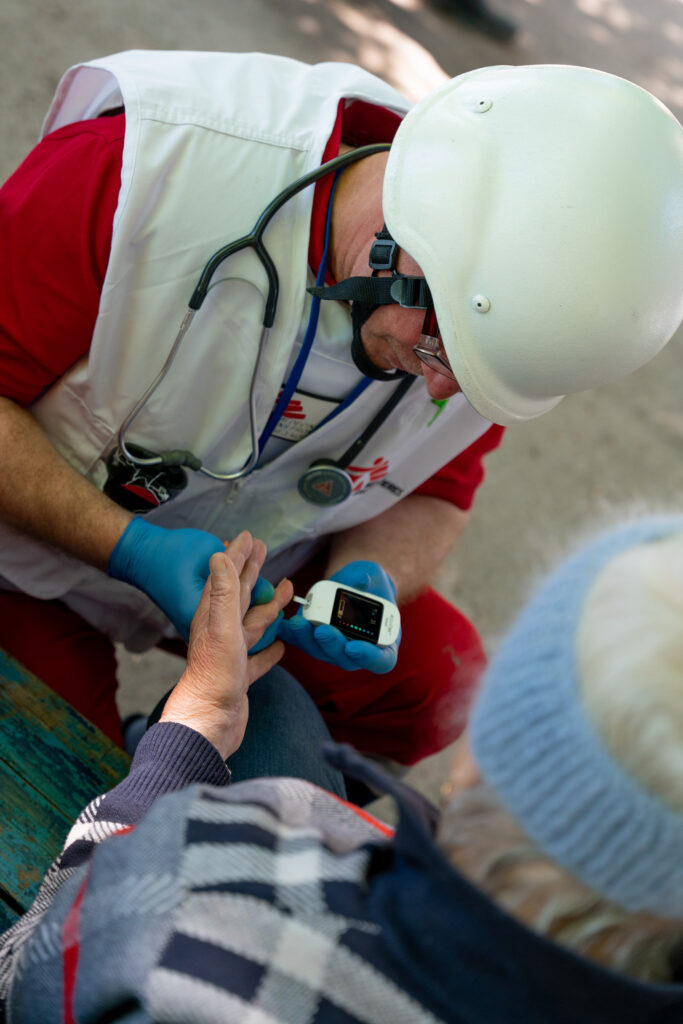
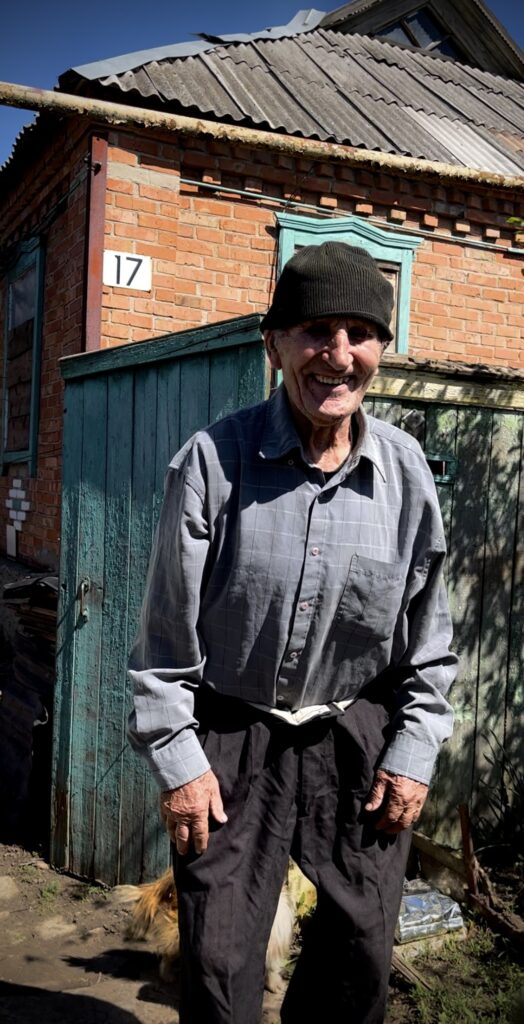
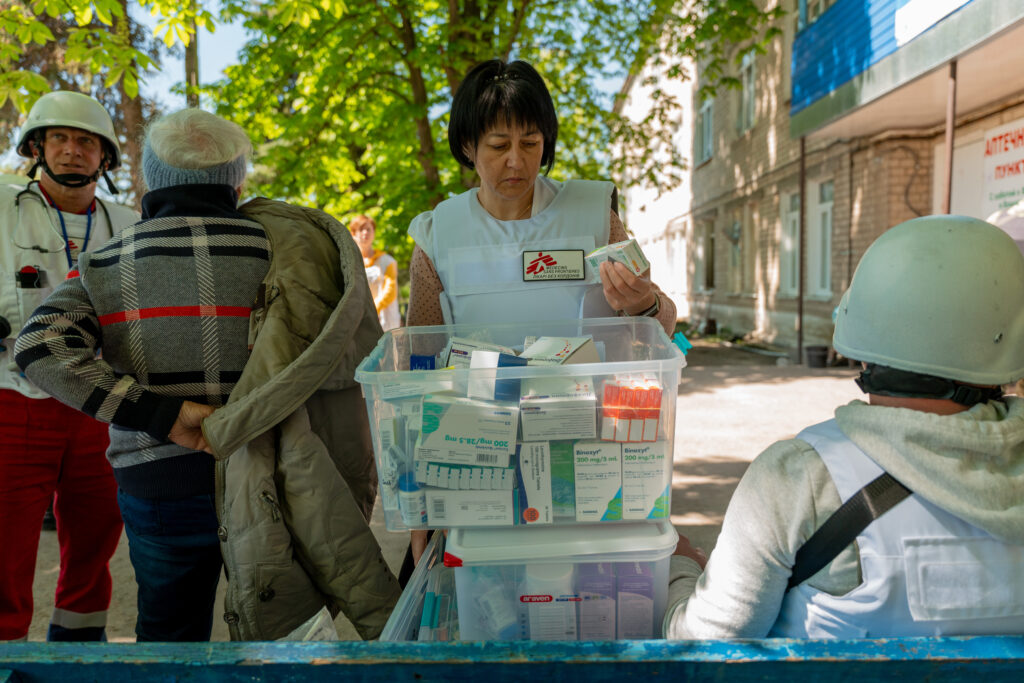
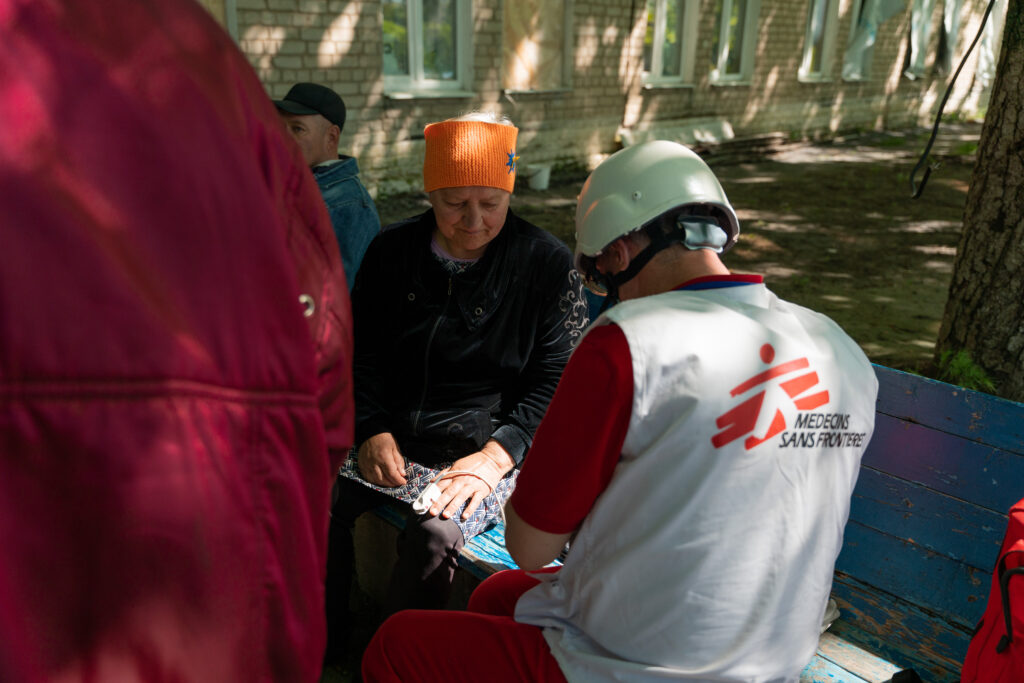

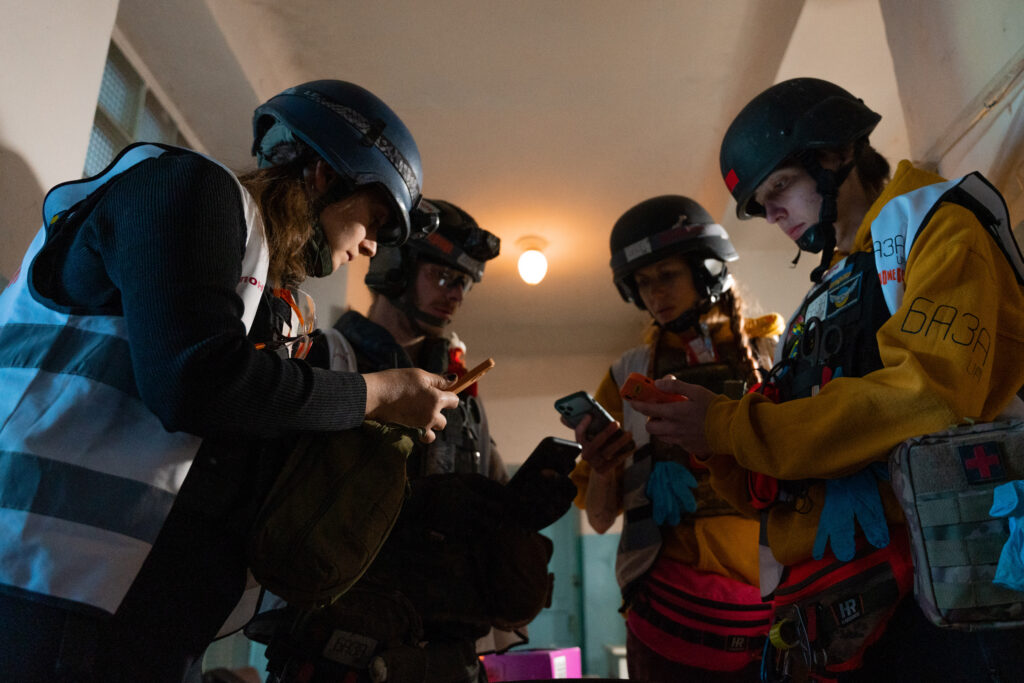
Photos by Madison Tuff and Joana Rettig
Update
We were still able to complete the two missions we had to postpone in the following days.
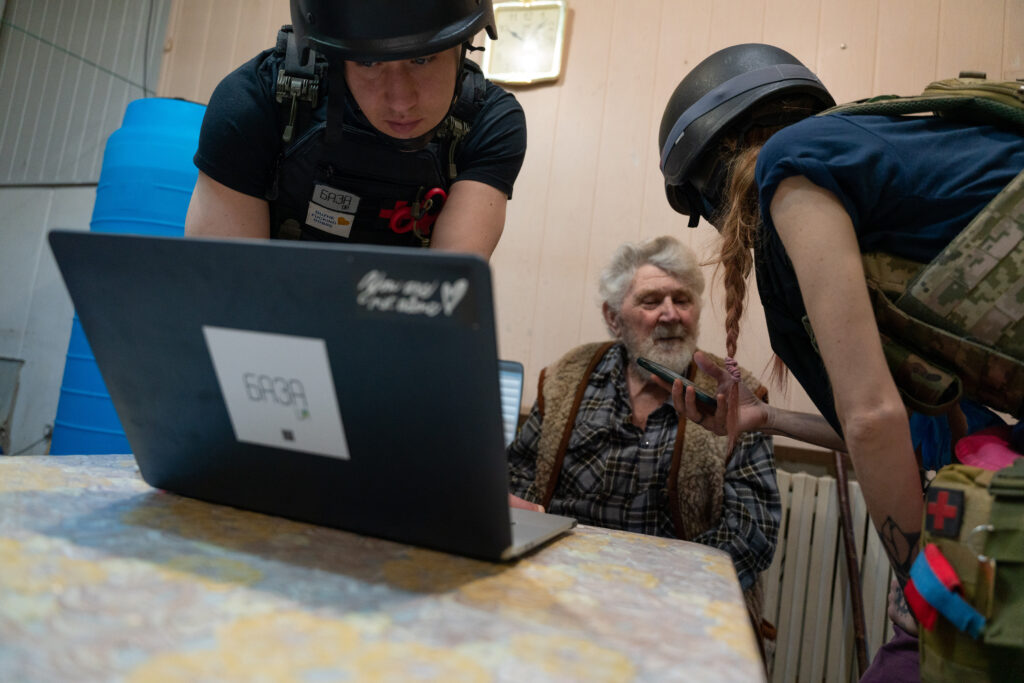
With a Starlink in our equipment, we could bring telemedicine care to the elderly man in cooperation with the U.S. organization Telehelp Ukraine. We had already procured the medication that the man had to take regularly.
Our team was also able to pick up the elderly man who wanted to be evacuated from Sivers’k.
